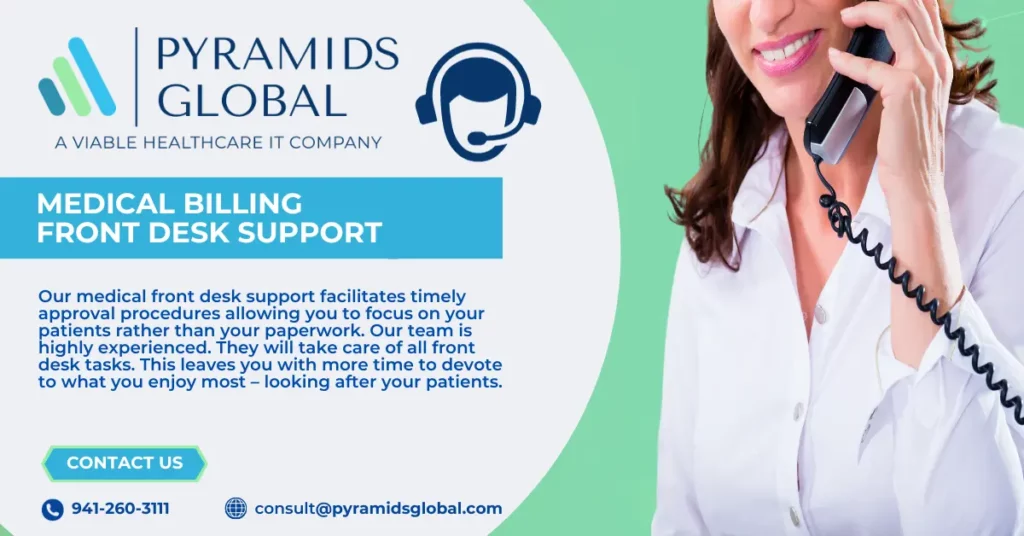In the ever-evolving healthcare realm, the spotlight on empathy and patient-centric methodologies is gaining momentum. This paradigm shift not only benefits patients but also holds paramount significance for the well-being of healthcare providers. A pivotal stride in this direction is the recent introduction of innovative primary care codes within the United States.
Introducing New Primary Care Codes in the United States
As the healthcare sector grapples with its challenges, a glimmer of optimism emerges with the revelation of groundbreaking care codes. These codes transcend mere bureaucratic rituals; they symbolize a fundamental metamorphosis in the delivery and administration of healthcare services. The primary intent behind these novel codes is to unravel the intricate tapestry of billing and coding intricacies, thereby sculpting a holistic healthcare environment centered around the patient. This, in turn, grants providers the liberty to invest more in the human facet of care.
Deciphering Primary Care Codes
Primary care codes, depicted through alphanumeric symbols, find allocation across diverse healthcare services. These standardized codes serve as conduits for seamless communication between healthcare providers, insurers, and billing services. The labyrinth of healthcare billing and coding intricacies has historically impeded efficient and patient-centric care. The advent of new primary care codes strives to simplify this labyrinth, facilitating accurate billing for providers and expediting claims processing for insurers.
While codes remain indispensable for administrative functionality, they are not meant to supplant human interaction. New primary care codes are tailored not to replace, but to amplify, human engagement by affording providers more time for substantive interactions with their patients.
Optimizing Billing and Coding for Primary Care Practitioners
The implications of streamlined billing and coding for primary care practitioners cannot be overstated. Alleviating administrative burdens grants physicians the bandwidth to delve into their patients’ needs, address concerns, and formulate individualized care plans.
Shifting the Onus to Primary Care Codes:
- Preceding Challenges with Byzantine Codes: The previous system, characterized by intricate codes, frequently resulted in errors, delays, and provider frustration. The introduction of new care codes marks a departure from this convolution.
- Liberation of Time for Physicians and Accentuating Patient Engagement: With the weight of convoluted coding lifted, physicians can redirect their efforts towards what truly matters – nurturing a profound connection with their patients.
Significance of This Paradigm Shift in Prioritizing the Physician-Patient Relationship
The transition towards simpler codes underscores the acknowledgment that the physician-patient relationship lies at the crux of adequate healthcare. By simplifying administrative processes, the focus can return to the essence of medicine – the human connection.
Empowering Patient-Centric Care through Refined Coding
The streamlined coding system not only benefits physicians but also plays a pivotal role in fostering a comprehensive approach to patient care. By dismantling barriers in data processing, healthcare providers gain a more nuanced understanding of their patients’ health. The introduction of new primary care codes facilitates enhanced data capture, enabling a more nuanced comprehension of patients’ health profiles. Consequently, this facilitates the crafting of personalized care plans, well-informed referrals, and proactive preventive interventions.
The ultimate objective of the streamlined coding system is to construct a patient-centric framework that prioritizes not just the treatment of illnesses but the holistic health and well-being of individuals. It constitutes a stride towards a more proactive and preventive model of care.
Embracing a Philanthropic Essence for Primary Care Codes
Delving into the Shift Towards a More Humanitarian Healthcare System
Beyond the administrative advantages, the introduction of new primary care codes signifies a broader transition towards a more humanitarian healthcare system. It recognizes the human facet of medicine and the intrinsic value of empathy in the healing process.
Acknowledgment of Emotional and Mental Labor of Both Physicians and Patients
The healthcare profession entails not only the application of medical knowledge but also emotional and mental labor. The new codes acknowledge and appreciate the emotional and mental investments made by physicians and patients in the healing journey.
Impact of an Empathy-Infused Approach on Cultivating a Healing Atmosphere
An empathy-driven approach, bolstered by simplified coding, lays the groundwork for a healing environment where patients feel understood, cared for, and valued. This shift extends beyond codes; it entails infusing the entire healthcare ecosystem with a philanthropic spirit.
Effects of Primary Care Codes on Medical Billing Services
The Role of Human Touch in Medical Billing Services
While the spotlight often rests on the impact on healthcare providers, it’s imperative to acknowledge the role of the human touch in medical billing services. The transition to new primary care codes introduces a more cooperative and communicative approach.
Standardized Framework Presented by New Primary Care Codes
The fresh codes present a standardized framework that benefits healthcare providers and streamlines the workflow of medical billing services. This standardization diminishes errors, amplifies efficiency, and guarantees a more streamlined financial facet of healthcare delivery. Alleviating administrative burdens for billing services and recognizing collaborative endeavors ensures a more efficient financial aspect of healthcare delivery.
Ensuring Adherence to Regulations with Primary Care Codes
While simplification is paramount, ensuring the alignment of new primary care codes with existing healthcare billing regulations is equally crucial. This alignment acts as a safeguard against legal implications and upholds the integrity of the healthcare system. Regulatory compliance is not a mere bureaucratic requisite; it serves as a protective measure for healthcare providers and billing services against legal entanglements. When implemented with regulatory adherence, the new codes contribute to a more secure healthcare environment.
Even within the realm of regulations and compliance, the emphasis should remain on preserving the human-centric ethos in the healthcare industry. The codes should embody the compassionate and patient-focused values that form the bedrock of the profession.
Challenges and Considerations in Primary Care Codes
Acknowledging Challenges with Compassion
The shift to new primary care codes presents challenges that demand acknowledgment with compassion. It necessitates an understanding of the concerns of healthcare providers and billing services, coupled with a supportive framework for adaptation.
Recognizing Endeavors Required for a Seamless Transition to the New Codes
A seamless transition to the new codes requires recognition of the endeavors needed at various levels within the healthcare system. This encompasses training for healthcare professionals, system updates, and ongoing support.
Highlighting the Ultimate Goal: Augmenting the Compassionate Delivery of Healthcare Services
Despite the challenges, it is imperative to keep the ultimate goal in focus – the enhancement of compassionate healthcare service delivery. The tribulations in transition should not overshadow the overarching mission of providing superior, more empathetic care.
Final Thoughts
The introduction of new primary care codes signifies a transformative juncture in the healthcare sector. It denotes a commitment to efficiency without compromising the compassionate delivery of care. Central to this transformation is the pledge to honor the time, dedication, and expertise of primary care physicians. By lessening administrative burdens, the healthcare system acknowledges and values the contributions of these frontline healthcare providers. As we contemplate the strides made towards a more efficient and compassionate healthcare ecosystem, it is paramount to recognize that the true value lies in every interaction between patients and providers. The human touch, accentuated by streamlined coding, constitutes the cornerstone of a healthier and more empathetic future in healthcare.
FAQs
Q1. How do the innovative primary care codes confer advantages upon healthcare providers?
Ans: The groundbreaking care codes offer succor to healthcare providers by simplifying the labyrinthine tapestry of billing and coding, affording them the luxury of investing more temporal resources in meaningful interactions with patients. This paradigm shift mitigates administrative encumbrances and amplifies the emphasis on the anthropocentric facet of caregiving.
Q2. In what manner do streamlined codes contribute to a more patient-centric paradigm?
Ans: Streamlined codes usher in a patient-centric paradigm, fostering a heightened data repository. This, in its wake, paves the way for bespoke care blueprints, well-informed referrals, and preemptive interventions, nurturing a comprehensive approach to healthcare.
Q3. What pivotal role do primary care codes enact in the realm of medical billing services?
Ans: Care codes play an integral role in the sphere of medical billing services by presenting a standardized framework that mitigates errors and augments operational efficiency. The symbiosis between healthcare providers and billing services undergoes a streamlined metamorphosis, ensuring a seamless financial underpinning for healthcare dissemination.
Q4. How do the new care codes align with the intricate web of healthcare billing regulations?
Ans: The harmonization of care codes with the intricate tapestry of healthcare billing regulations assumes paramount significance, safeguarding against legal ramifications and preserving the sanctity of healthcare providers and billing services. This alignment upholds the ethos of anthropocentrism within the healthcare industry.
Q5. What hurdles accompany the transition to avant-garde care codes?
Ans: The journey toward adopting state-of-the-art care codes is fraught with challenges that demand empathetic resolution. These hurdles encompass the imperative for comprehensive training, system overhauls, and ongoing support to facilitate a seamless adaptation process.
Q6. What constitutes the overarching goal behind the introduction of pioneering primary care codes?
Ans: The introduction of cutting-edge care codes aspires to elevate the compassionate dispensation of healthcare services. The focal point resides in crafting a more streamlined system without compromising the cherished anthropocentric values intrinsic to the healthcare profession.





